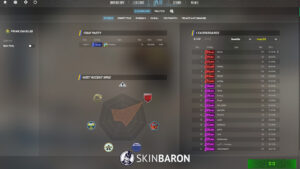Bully Tee Blog
Your go-to source for everything related to bullies and tee culture.
Map Veto Magic: Level Up Your CS2 Game Strategy
Unleash your CS2 potential! Dive into game-changing map veto strategies and elevate your gameplay to the next level.
Mastering Map Veto: Essential Strategies for CS2 Success
In the competitive world of CS2, mastering Map Veto is crucial for gaining an edge over your opponents. Understanding which maps favor your team's strengths and which ones expose your weaknesses can significantly influence your chances of victory. Prioritize maps that align with your team's playstyle and strategy. Analyze your previous game performances to identify maps where your team excels and those where you struggle. By doing so, you can implement a strategic approach during the banning process, ensuring that you avoid maps that hinder your gameplay.
Additionally, communication among team members is key to effective Map Veto decisions. Establish a veto strategy that incorporates each player's preferences and strengths. During the veto phase, consider using a structured format such as a ranked list of maps that each member wants to play or avoid, which promotes clarity in decision-making. Remember, Map Veto is not just about personal preference; it’s about maximizing your team's overall performance. Integrating these strategies will lead to a more cohesive team dynamic and ultimately contribute to your success in CS2.

Counter-Strike is a popular first-person shooter game that emphasizes teamwork and strategy. Many players seek to enhance their gameplay experience with customized settings, such as the cs2 square crosshair, which can help improve aiming accuracy. The game has evolved through various iterations, maintaining a dedicated community since its inception.
The Impact of Map Veto on Team Composition: A Deep Dive
The concept of map veto has revolutionized the dynamics of competitive gaming, particularly in team-based esports. By allowing teams to strategically eliminate maps from the pool, map veto influences not only the match's immediate outcome but also the broader approach to team composition. For example, a team might excel on a specific map that suits their playstyle, making it essential to eliminate any potential maps that could give an opposing team an advantage. Thus, the map veto process ultimately shapes how teams construct their line-ups and strategies around the maps they expect to play.
Furthermore, the impact of map veto extends to the synergy between players and their respective roles. When a team decides which maps to veto, they must consider the strengths and weaknesses of their players, as well as the overall team composition. Teams with a flexible roster can adapt their strategies based on the maps available, often leading to unexpected combinations that capitalize on their opponents' vulnerabilities. This adaptability can make or break a team's success in a tournament setting, underscoring the importance of a well-planned map veto strategy in shaping effective team compositions.
Top Map Veto Mistakes to Avoid in CS2 Competitive Play
In CS2 competitive play, understanding map veto strategies is crucial for gaining a competitive edge. One of the most common mistakes players make is failing to analyze the opponent's strengths and weaknesses before making their veto decisions. By neglecting to consider what maps your opponents excel on, you risk giving them an advantage that could cost you the match. Always take the time to research and prepare your veto selections based on your opponents' recent performances and map preferences.
Another critical error is ignoring team synergy when vetoing maps. Choosing a map that your team is uncomfortable with or lacks experience on can lead to disastrous results. It’s essential to recognize the strengths of your team composition and select maps that enhance your gameplay. For instance, if your team excels in close-quarter combat, vetoing larger maps can help you maintain control and improve your chances of securing rounds. Remember to communicate openly with your team about veto strategies to ensure everyone is on the same page.